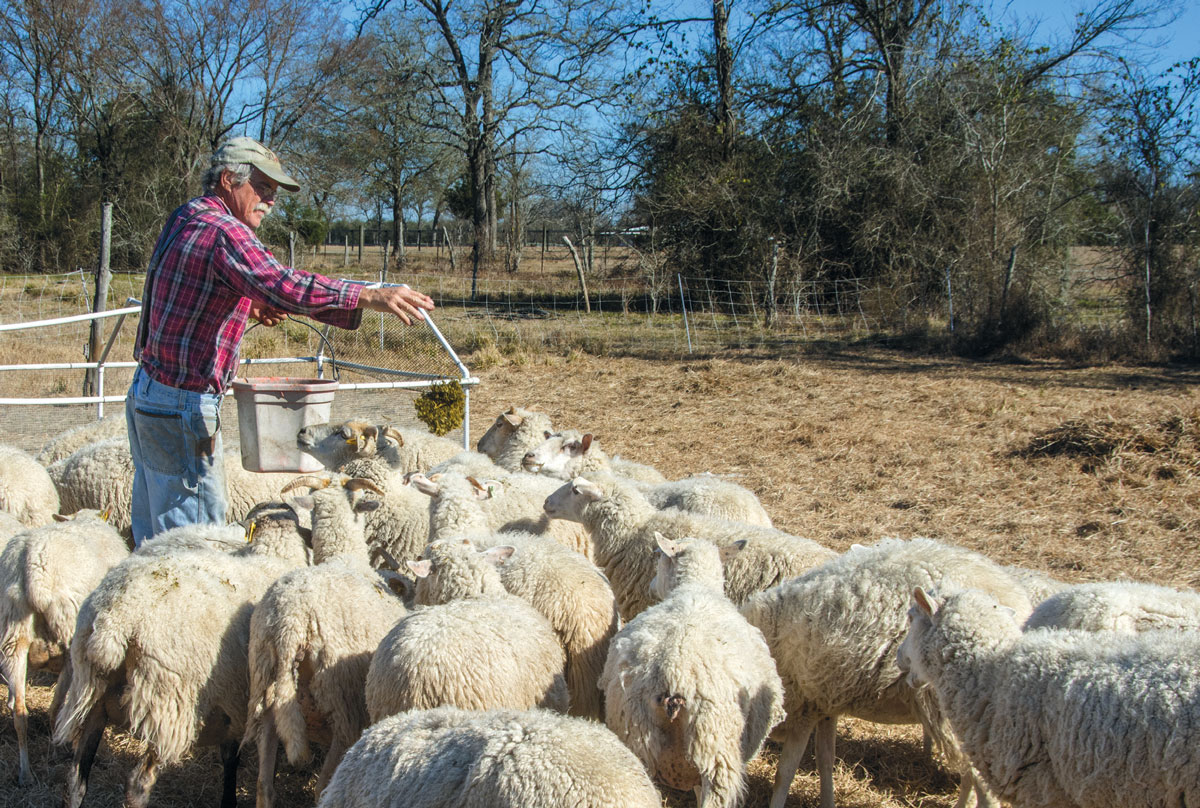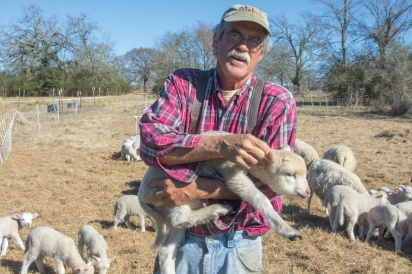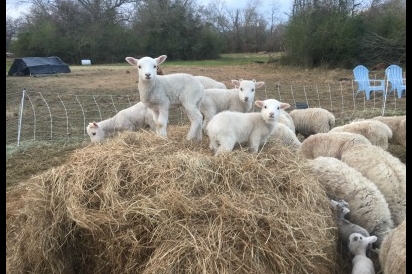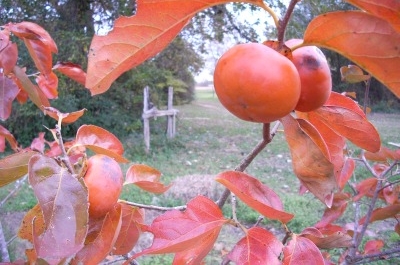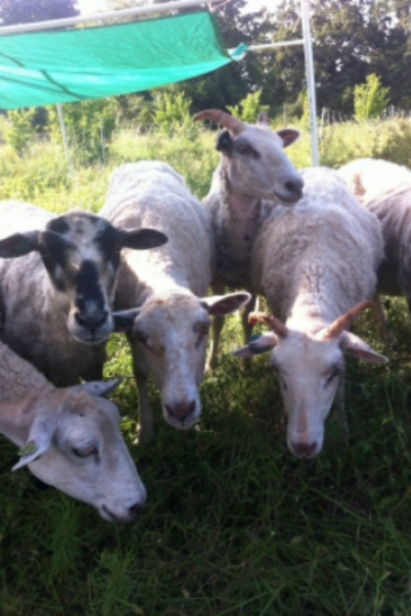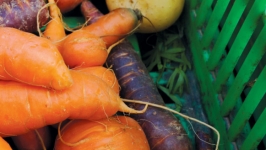Hooves, Hens and Heritage - Laughing Frog Farm
Laughing Frog Farm sprouted from one heirloom seed and has grown sustainably ever since
In 1978 I planted a seed. That seed started my first 10- by 10-foot organic garden on the east end of Houston and it has grown into the Laughing Frog Farm, 21 acres of organically managed permaculture farming in northern Waller County, Texas. It was a “greasy bean” seed that was saved by generations of my family and handed to me by my mother. It was my inheritance and my heritage.
I grew up in Kentucky, eating food out of our garden during the summers and canning vegetables for the winter. The food chain was simple: Grow together, cook and eat at the family table. Heritage seeds are seeds with a story and I want to continue their story.
A Healthy Soil
I do not grow plants but rather I nurture the soil. The soil feeds the plants and they grow with help from water and sunlight. When most of us garden we get a soil report and add organic amendments to supply what the report tells us is missing. This is expensive, requires mining and trucking and includes labor.
When I go into the woods and grab a handful of soil it is already alive and fertile. How can the forest nurture such fantastic soil yet I have to work hard to get soil to acceptable levels? One answer is in Sir Albert Howard’s statement: “Mother Earth never attempts to farm without livestock.” Of course, that “livestock” was wild. How could I replicate that with farm animals?
Heritage Livestock with a Story
In the 70 years since modern farmers began mechanized tillage, separated animals from crops and introduced chemical farming, nutrient levels in the soil have fallen considerably.
I knew I needed to integrate livestock into the ecosystem at the farm to mimic nature and achieve the biological system that would feed my plants. We started with chickens and sheep. Chickens are good at insect control and both chickens and sheep are weed eaters at the front, soil aerators on the ground and manure spreaders at the rear. But which species should I choose?
Currently, in America most of our dairy cattle, beef cattle, pigs, chickens, sheep andgoats come from a very narrow genetic pool, leaving them vulnerable to genetically specific disease. Monoculture is not just a problem with crops.
Much like we would do when choosing and buying heritage seeds, we researched heritage and endangered livestock breeds and settled on a very diverse group of chickens and a pure line of critically endangered sheep: Gulf Coast Native Sheep. Our laying hens include about 20 different, mostly heritage, breeds that provide a good sampling of genetic diversity. For meat chickens we raise the red broiler chickens developed to meet the standards of the French Label Rouge Free Range program and capable of foraging, unlike most industrial, commercial chickens.
Our Gulf Coast sheep are descendants of Spanish flocks that were brought to the New World by explorers in the 1500s. They gradually adapted to the heat and humidity and were raised throughout the South, from the piney woods all the way to the Everglades.
The breed is a meat and wool sheep that has developed a parasite resistance, heat tolerance, foot-rot resistance and has a meat quality recognized by Slow Foods “Ark of Taste.” With the development of larger, faster-growing breeds and pharmaceuticals to treat the parasite problems, these Gulf Coast sheep fell out of favor and are now on the Livestock Conservancy list of critically endangered species.
Permaculture: A Joint Venture
In permaculture we learn to identify and utilize biological resources. Our pond is overly fertile, thanks to the upstream cattle farm, and grows heavy crops of duckweed. Duckweed is 21% protein and the chickens love it. Any duckweed they do not eat stays on the ground as a fertilizer. We supplement with Coyote Creek Organic feed and bugs. “Chickens fed a vegetarian diet” simply means the chicken does not get to go outside, where the insects are.
After the chickens leave the garden it is a good time to possibly plant a cover crop like clover, rye or oats that we can harvest for the sheep and chickens or they can harvest it themselves. We now have a fertile field that we must not eat out of for 90 to 120 days after the animals come off it, to give the manure time to decompose. If that field is not already covered in hay we make sure it is well mulched, because we never want to see bare ground in a garden or a pasture.
We now set our crops directly in the ground by simply moving the mulch. When the crops come up the mulch is pushed back around them. We do not have to till the soil. Plowing and tilling breaks up the biological activity in the soil, releases carbon and decreases water infiltration. We plant a diverse combination of low-growing plants, taller plants, vines, shrubs, trees and multiple vegetables to better utilize the available nutrients and attract beneficial insects.
The fences around the garden are planted in grapes and fruit trees are added at the edges. The trees, vines and shrubs add shade and insect habitat for the chickens. Even with hundreds of chickens we still have a pond of floating plants and certain fish can live on duckweed and mosquito fern. With that biological resource staring us in the face, we added aquaponic in 2011. We now can grow fish that fertilize our aquaponic crops and use excess fish waste to help fertilize the soil-based gardens.
There is no off-farm input other than seeds, and we save many of those. If we wish to be sustainable we must do our best to move away from petroleum, nurture our soil, save seed, buy heritage seeds, raise native animals and watch and mimic nature.
Currently the USDA and most soil labs recognize 14 nutrients in the soil that—along with hydrogen, oxygen and carbon—are all they think we need to produce healthy crops and healthy people. My soil is going to have hundreds more just in case.
The system we use is not perfected and we still have a lot to learn. Adaptation will be constant, but the results so far have been encouraging. This summer I will plant a garden of Jack Kelly butterbeans, named after my stepfather, handed down to me and available at the Sustainable Mountain Agriculture Center in Berea, Kentucky. Or in the fall you can call me for a few.
My inheritance.
My heritage.


